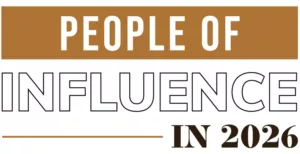
Higher ed is highly effective equalizer for women
Recent distrust in colleges could undermine gains females have been making

Robin Pickering is a professor and chair of Public Health at the Gonzaga University School of Health Sciences.
Colleges and universities in the region and nation are grappling with numerous challenges, including declining enrollments, decreased and uncertain public funding, rising operational costs, issues with financial aid, and a growing public mistrust of higher education.
Recent Gallup polls reveal a stark decline in public confidence in higher education, with only 36% of Americans expressing significant trust in these institutions, down from 57% in 2015. Additionally, partisan divides in perspectives about the contributions of higher education on society are significant, with only 31% of Republican and Republican-leaning Americans stating that “colleges and universities have a positive effect on the way things are going in the country these days,” according to 2024 Pew Research data.
Amid these challenges, investing in women's higher education stands out as a crucial strategy for fostering economic stability, public health, and family well-being.
Economic stability
The economic benefits of higher education are well-documented. According to a recent economic analysis conducted by The Hamilton Project at the Brookings Institution, “Over the entire working life, the typical college graduate will earn $1.19 million in today’s dollars. This is more than twice as much as the lifetime earnings of a typical high school graduate ($580,000), and $335,000, or 39%, more than that of a typical associate degree graduate.”
Due in part to historical confidence, the U.S. Census Bureau states that the percentage of Americans aged 25 or older with a bachelor’s degree has risen from 11% in 1970 to 38% in 2021. A significant driver of this increase is the rising number of women completing four-year degrees. In 2021, women constituted 56% of the college student population, with approximately 12 million female students compared to 9.2 million male students.
Though higher education is generally a significant social determinant of health, educated women contribute uniquely to economic growth. According to a Brookings data analysis of middle-class—defined as the middle 60% of households—women’s earnings accounted for 91% of the total household income gain for their families from 1979 to 2018.
In households with children, higher levels of maternal education are associated with higher pay and more secure employment. This increased earning capacity contributes to broader economic growth by expanding the skilled workforce and increasing consumer spending. Furthermore, maternal education fosters intergenerational benefits, as children of educated mothers are more likely to pursue and succeed in their own educational endeavors, perpetuating a cycle of economic stability and improved health outcomes across generations.
Quality of life
Beyond economic benefits, higher education plays a vital role in enhancing the quality of life within communities. Educated women are more likely to engage in civic activities, volunteer work, and community leadership, fostering social cohesion and community development. They also advocate for educational and social reforms that benefit future generations, potentially creating a cycle of exponential impact.
The nonmonetary benefits of education are substantial. A study of 1,933 adults published in the Psychology of Well-Being journal stated that higher education levels lead to improved well-being and reduced psychological distress. This connection is mediated by healthy behaviors such as engaging in physical activity, abstaining from drinking and smoking, and maintaining social interactivity. These behaviors not only improve individual health but also enhance community health outcomes, benefiting society as a whole.
Societal, public health impacts
Several large-scale studies have demonstrated the positive impact of women's higher education attainment on public health.
*Nurses' Health Study, an ongoing series of prospective cohort studies initiated by Harvard has followed thousands of women over several decades. It has shown that higher education levels among women are linked to lower risks of chronic diseases such as cardiovascular disease and cancer, largely due to healthier lifestyle choices and better access to health care resources.
*An Organization for Economic Co-operation and Development extensive analysis of education and health data from 35 countries over 21 years revealed that higher education levels in women are strongly associated with better health outcomes, including lower infant mortality rates, higher child vaccination rates, and longer life expectancy. Education enhances knowledge and skills, leading to better personal health management and utilization of health care services.
*A World Health Organization study on maternal and perinatal health analyzed data from 286,360 women and found that higher maternal education significantly reduces maternal mortality rates. Educated women are more likely to access prenatal care and deliver in health facilities, thereby reducing the risk of complications during childbirth.
Moving forward, addressing pushback
Despite these clear benefits, current trends indicate a lack of trust in higher education by some. Even modest disinvestment in higher education could undermine the progress made in recent decades and exacerbate economic and health disparities.
Building trust and investing in women's higher education is not just a matter of equity; it is a strategic imperative for ensuring economic stability, quality of life, and public health. It is crucial that policymakers, educational institutions, and businesses collaborate to reduce barriers and support women's access to and success in higher education.
Robin Pickering is a professor and chair of Public Health at the Gonzaga University School of Health Sciences.



_web.webp?t=1764835652)